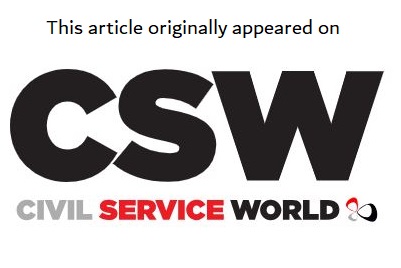As HM Treasury commits £51m to boost capacity of the tax agency’s helplines, an NAO study has found that not enough has been done to raise awareness of digital alternatives
A report has found that customers spent a cumulative on hold to HM Revenue and Customs phonelines during the 2023 tax year – a figure that has more than doubled in the space of three years.
In recent years, work to direct customers to digital services has been a key part of HMRC’s plan to reduce costs and meet savings targets set out in the 2021 Spending Review and the 2022-23 efficiency and savings review – which together require the department to cut £149m in spending a year. HMRC’s strategy has aimed to reduce call volumes and free up staff to deal with more complex queries by encouraging people to turn to its digital services instead.
However, a new report from the National Audit Office found that the efforts have yet to ease pressure on services as much as hoped, and that the department has “not yet done enough” to raise awareness of its digital services.
The report was published in the same week as ministers revealed a commitment of £51m in extra funding to help boost the capacity of HMRC phonelines. The cash injection comes two months after the department announced – and then quickly U-turned on – plans to close its tax self-assessment helpline over the summer months.
When HMRC dropped the proposals in response to criticism, HMRC permanent secretary Jim Harra said it recognised that “more needs to be done to ensure all taxpayers’ needs are met, whilst also encouraging them to transition to online services”.
Yesterday’s NAO report also found HMRC had begun cost-saving staff cuts too early. “At the start of 2024-25, HMRC needed to reduce its overall customer service workforce by 14% in-year to live within its budget. It only achieved a 9% reduction between 2019-20 and 2023-24, over which time its call-handling performance significantly worsened,” the report said.
The NAO also said that digital services have not yet become successful enough to warrant a reduction in helplines. The report revealed that “approximately half the queries we sampled would need contact with an adviser to resolve, including queries about tax on multiple jobs.”
Despite this, HMRC directed to online services nearly a third of callers in the first 11 months of 2023-24, as the enquiries were deemed suitable for an online resolution. Worryingly “HMRC does not currently know how many of these customers succeeded in resolving their query online”, auditors found.
The NAO report recommended “testing and evaluation that is proportionate to the scale of the service change, including understanding customer experiences and obtaining views from customers”.
Related content
- HMRC signs off £500m in deals for digital services revamp
- HMRC IT spend tops £1.1bn in FY23 in drive to ‘modernise infrastructure’
- HMRC picks £5m partner to support programme to ‘transform customer interactions’
And it recommended that “for future spending reviews, HMRC should only plan to realise staff reductions from changes to its digital services once improvements have taken effect and the benefits can be estimated with confidence”.
It urged HMRC to “allow more time for new services to bed in, understand the difference they make, and then make staff reductions when the benefits are demonstrated”.
“Otherwise, services will continue to suffer, and unnecessary service pressures and contact will remain,” it said.
The report also called on HMRC to reassess what levels of customer service performance it needs to achieve value for money; come up with a plan for how it will support customers to use digital services; and invest in raising awareness of its digital services.
To engage with any of its recommendations, HMRC must first “agree sufficient funding with HM Treasury to achieve those target levels or be clear on the level of performance it can achieve if funding is not sufficient”, the report said.
HMRC estimates that 66% of customers’ calls in 2023-24 were avoidable as they could have been dealt with online instead, according to the NAO report.
Responding to the report, an HMRC spokesperson said: “We continue to encourage people to deal with us online or via the app where they can, and we are working to provide even better, easier and always-available online services. But, as we have recognised, these changes need to happen at a speed and in ways that our customers are comfortable with.”
Jim Harra, HMRC’s chief executive, said: “We remain committed to expanding our online services and encouraging customers to go online where they can, as we strive to deliver good services as cost-effectively as possible. But we recognise this must happen at a pace the public is comfortable with.”






https://oragoda.tistory.com/entry/운전면허증-분실신고-및-재발급-받는-방법
https://oragoda.tistory.com/entry/국민연금-납부액-조회-방법-및-계산법
https://madreviewer.tistory.com/tag/흑자헬스
https://madreviewer.tistory.com/tag/아리랑제
벼룩시장 신문그대로보기 (구인구직, 부동산) 벼룩시장 신문그대로보기 바로가기 그리고 지역별 벼룩시장 종이신문그대로보기 방법 (구인구직, 부동산) 알아볼게요. 교차로신문 같이 벼룩시장은 지역별 일자리, 구인구직, 부동산 등 다양한 정보를 제공해요. 교차로신문그대로보기 바로가기는 아래에서 확인하고, 오늘은 벼룩시장 신문그대로보기 바로가기 그리고 사용법 섹스카지노사이트
벼룩시장 신문그대로보기 (구인구직, 부동산) 벼룩시장 신문그대로보기 바로가기 그리고 지역별 벼룩시장 종이신문그대로보기 방법 (구인구직, 부동산) 알아볼게요. 교차로신문 같이 벼룩시장은 지역별 일자리, 구인구직, 부동산 등 다양한 정보를 제공해요. 교차로신문그대로보기 바로가기는 아래에서 확인하고, 오늘은 벼룩시장 신문그대로보기 바로가기 그리고 사용법 섹스카지노사이트
벼룩시장 신문그대로보기 (구인구직, 부동산) 벼룩시장 신문그대로보기 바로가기 그리고 지역별 벼룩시장 종이신문그대로보기 방법 (구인구직, 부동산) 알아볼게요. 교차로신문 같이 벼룩시장은 지역별 일자리, 구인구직, 부동산 등 다양한 정보를 제공해요. 교차로신문그대로보기 바로가기는 아래에서 확인하고, 오늘은 벼룩시장 신문그대로보기 바로가기 그리고 사용법 섹스카지노사이트
청도페이스라인출장
대전나이트클럽
https://klero.tistory.com/tag/srt20추석20예매
아름다운스웨디시업소
https://pornmaster.fun/hd/跑步机后入番号ww3008-cc跑步机后入番号-dwk
https://pornmaster.fun/hd/www-xxx-vibos-com
https://pws1999.tistory.com/167
수원출장샵
충무로출장업소
https://itlearn.kr/
벼룩시장 구인구직 및 신문 그대로 보기 (PC/모바일) | 구인구직 앱 어플 무료 설치 다운로드 | 모바일 벼룩시장 보는 방법 | 벼룩시장 부동산 | 지역별 벼룩시장 | 벼룩시장 종이신문 에 대해 알아보겠습니다. 섹스카지노사이트
벼룩시장 구인구직 및 신문 그대로 보기 (PC/모바일) | 구인구직 앱 어플 무료 설치 다운로드 | 모바일 벼룩시장 보는 방법 | 벼룩시장 부동산 | 지역별 벼룩시장 | 벼룩시장 종이신문 에 대해 알아보겠습니다. 섹스카지노사이트
이태원스웨디시안마게이클럽
울산콜걸
수원출장샵
전신스타킹
강남콜걸
이태원게이바
아름다운스웨디시업소
여행지
대전세븐나이트
https://itgunza.com/557
https://itgunza.com/366
https://itgunza.com/393
https://honeytiplabs.com/카카오톡-알림-숫자/
https://honeytiplabs.com/아이폰-카메라-비율/
https://ajaedotcom.tistory.com/50
https://ddnews.co.kr/category/it/page/5/
하동동해출장만남 소자본 창업
울산콜걸
https://nicesongtoyou.com/free-legal-center/
영등포안마살롱
https://gorgopage.com/국민건강보험-환급금-지급-시작-1인-평균-132만원-본인/
울산콜걸
거제출장안마
https://chotiple.tistory.com/tag/미스트롯220재방송20다시보기
https://gorgopage.com/전립선비대증에좋은음식-10가지와-전립선-비대증에/
https://madreviewer.tistory.com/tag/컴퓨터20마이크
https://dnolife.net/software/honeyview/
https://oculus-vr.co.kr/hwang-hee-chan-wolverhampton/
https://nicesongtoyou.com/job/byeolugsijang-newspaper/
https://oculus-vr.co.kr/hwang-hee-chan-wolverhampton/
여행지
https://itmoney4you.com/ena-편성표-채널번호/
https://itgunza.com/654
https://itmoney4you.com/남진-인천콘서트/
이태원게이바
https://madreviewer.tistory.com/entry/다운로드-없이-jpeg-pdf-변환-쉽게하기
https://www.ohgunstory.com/entry/cell-ED8C8CEC9DBC-EC97B4EAB8B0-EAB7B8EBA6ACEAB3A0
https://k-studio.kr/호리존-캐슬도어-테마-스튜디오-강남-스튜디오-렌탈/
https://gorgopage.com/하나은행-핀크-생활비대출-소액-모바일-500만원-후기/
안성출장마사지
https://souhaya.tistory.com/1059
http://baekis.egloos.com/archives/2019/05
전신스타킹
울산콜걸
아름다운스웨디시업소
https://nicesongtoyou.com/
https://mintfin.tistory.com/tag/로또분석하는방법
하동동해출장만남 소자본 창업
https://mintllama.tistory.com/tag/ECBD94EBA19CEB829820EBB0B1EC8BA020ED95ADECB2B420ED9895EC84B1EAB8B0EAB084
https://oculus-vr.co.kr/hwang-hee-chan-wolverhampton/
https://mintfin.tistory.com/entry/인터넷-타자연습-사이트-한컴타자연습
https://www.yjmusic.co.kr/everland-qpass/
https://acase.co.kr/62
https://sportscom.co.kr/mittjylland-ruebwi-1028/
양산시술출장마사지
https://verygoodforyou.tistory.com/entry/ECB9B4EB939CED8FACEC9DB8ED8AB8-ED86B5ED95A9ECA1B0ED9A8C-EC8B9CEC8AA4ED859C-ED9884EAB888ECA084ED9998
https://new-software.download/windows/alyac/
https://nicesongtoyou.com/financial-portal/
https://hipsterlibertarian.com/5647
https://honeytiplabs.com/아이폰-한글-파일/
https://chotiple.tistory.com/tag/테트리스20무료게임
https://download-install.com/entry/EBA99CEBA1A0-ED948CEBA088EC9DB4EC96B4-EB8BA4EC9AB4EBA19CEB939C-EC84A4ECB998
https://dday.tistory.com/84
https://mintllama.tistory.com/tag/EC9790EC96B4ED9484EB9DBCEC9DB4EC96B420ECB694ECB29C
https://mintllama.tistory.com/archive/202301
https://infohelpforyou.com/KBS-온에어/
https://kemongsa.co.kr/duty-free-shop/
https://klero.tistory.com/entry/HP-Blade-mezzanine-card?category=633675
purple pharmacy mexico price list: best online pharmacies in mexico – Mexican Easy Pharm
https://new-software.download/windows/opgg-desktop/
https://new-software.download/windows/page/4/
buying prescription drugs in mexico online https://mexicaneasypharm.shop/# buying from online mexican pharmacy
mexican border pharmacies shipping to usa
Excellent post! The tip on using a debt snowball approach is spot on. I’ve been using this strategy, and it’s worked wonders. I also created a free guide on how to use it, which your readers might find useful. Great job!
https://kamapharm.com/# Kama Pharm
can i buy prednisone online without prescription
https://semapharm24.com/# cheap semaglutide pills
5 prednisone in mexico
http://kamapharm.com/# sildenafil oral jelly 100mg kamagra
can you buy prednisone over the counter in canada
대전세븐나이트
이태원스웨디시안마게이클럽
https://kamapharm.shop/# Kamagra tablets
buying prednisone mexico
https://semapharm24.shop/# buy semaglutide
compare prednisone prices
One thing is that if you are searching for a education loan you may find that you will need a cosigner. There are many conditions where this is true because you may find that you do not employ a past credit history so the loan provider will require that you’ve someone cosign the financial loan for you. Good post.
Very great post. I simply stumbled upon your blog and wished to say that I have really loved browsing your blog posts. In any case I抣l be subscribing to your feed and I am hoping you write once more very soon!
https://semapharm24.shop/# Sema Pharm 24
prednisone in uk
https://cytpharm.shop/# CytPharm
prednisone 10mg for sale
https://dappharm.shop/# priligy
buy prednisone without rx
https://cytpharm.shop/# cytotec online
prednisone for sale in canada
https://farmabrufen.com/# Farma Brufen
Farmacie on line spedizione gratuita
http://farmabrufen.com/# FarmaBrufen
farmacie online affidabili
http://farmatadalitaly.com/# comprare farmaci online con ricetta
Farmacie online sicure
https://kakaotaxi.dasgno.com/kakao-pay
https://kakaotaxi.dasgno.com/kakao-fee
farmacia online: Brufen senza ricetta – farmacie online autorizzate elenco
Farmacia online miglior prezzo: Cialis generico – comprare farmaci online all’estero
farmacie online sicure
Some casinos feature themed gaming areas.: taya365 – taya365 login
https://tiptravel.tistory.com/13
https://tiptravel.tistory.com/65
Gaming regulations are overseen by PAGCOR.: phmacao club – phmacao com login
phmacao phmacao club Some casinos have luxurious spa facilities.
Los pagos son rГЎpidos y seguros.: winchile casino – winchile casino
Los jugadores pueden disfrutar desde casa.: win chile – winchile.pro
winchile casino winchile La competencia entre casinos beneficia a los jugadores.
Hay casinos en Santiago y ViГ±a del Mar.: jugabet casino – jugabet
A variety of gaming options cater to everyone.: phmacao com login – phmacao club
Poker rooms host exciting tournaments regularly. http://phtaya.tech/# The casino scene is constantly evolving.
La variedad de juegos es impresionante.: jugabet.xyz – jugabet
Casinos offer delicious dining options on-site.: taya365.art – taya365 login
taya777 login taya777 register login Many casinos host charity events and fundraisers.
The Philippines has several world-class integrated resorts.: phtaya login – phtaya login
Some casinos have luxurious spa facilities.: taya365.art – taya365
The casino scene is constantly evolving.: taya777 login – taya777 register login
taya365 login taya365 login Poker rooms host exciting tournaments regularly.
Los casinos organizan noches de trivia divertidas.: winchile – winchile
taya777 login taya777 Many casinos provide shuttle services for guests.
Los casinos ofrecen entretenimiento en vivo.: winchile casino – win chile
Gambling can be a social activity here.: taya777 register login – taya777 register login
taya365 taya365 com login The Philippines has several world-class integrated resorts.
Gaming regulations are overseen by PAGCOR.: phtaya – phtaya
Live music events often accompany gaming nights.: taya365 login – taya365
양산시술출장마사지
The casino experience is memorable and unique.: phtaya casino – phtaya.tech
Most casinos offer convenient transportation options.: taya365.art – taya365 login
phmacao phmacao com Casinos offer delicious dining options on-site.
Los casinos ofrecen entretenimiento en vivo.: winchile.pro – win chile
Poker rooms host exciting tournaments regularly. https://taya365.art/# Many casinos have beautiful ocean views.
Slot machines feature various exciting themes.: taya365 com login – taya365.art
Casino promotions draw in new players frequently.: phmacao – phmacao.life
taya365 taya365.art Many casinos offer luxurious amenities and services.
Casino visits are a popular tourist attraction.: phmacao com login – phmacao
Some casinos have luxurious spa facilities.: phmacao casino – phmacao casino
winchile casino winchile La mГєsica acompaГ±a la experiencia de juego.
Many casinos offer luxurious amenities and services. https://taya777.icu/# Players often share tips and strategies.
Online gaming is also growing in popularity.: taya777 login – taya777.icu
The Philippines has several world-class integrated resorts.: phmacao com – phmacao
phmacao club phmacao.life Some casinos have luxurious spa facilities.
벼룩시장 신문그대로보기 (구인구직, 부동산) 벼룩시장 신문그대로보기 바로가기 그리고 지역별 벼룩시장 종이신문그대로보기 방법 (구인구직, 부동산) 알아볼게요. 교차로신문 같이 벼룩시장은 지역별 일자리, 구인구직, 부동산 등 다양한 정보를 제공해요. 교차로신문그대로보기 바로가기는 아래에서 확인하고, 오늘은 벼룩시장 신문그대로보기 바로가기 그리고 사용법 섹스카지노사이트
Slot tournaments create friendly competitions among players.: taya365.art – taya365 login
Many casinos provide shuttle services for guests.: phtaya – phtaya
Gaming regulations are overseen by PAGCOR.: phtaya casino – phtaya
Most casinos offer convenient transportation options.: taya777.icu – taya777 register login
Responsible gaming initiatives are promoted actively.: taya777 register login – taya777.icu
The Philippines offers a rich gaming culture.: phmacao com – phmacao club
MegaIndiaPharm: india pharmacy – Mega India Pharm
xxl mexican pharm: xxl mexican pharm – reputable mexican pharmacies online
mexican mail order pharmacies: buying prescription drugs in mexico online – xxl mexican pharm
buying drugs from canada canadian pharmacy 24 easy canadian pharm
rx pharmacy coupons: Cheapest online pharmacy – online pharmacy delivery usa
MegaIndiaPharm: MegaIndiaPharm – MegaIndiaPharm
Online pharmacy USA canadian pharmacies not requiring prescription cheapest pharmacy for prescriptions without insurance
easy canadian pharm: trustworthy canadian pharmacy – reliable canadian pharmacy
Best online pharmacy: canadian pharmacy no prescription needed – Online pharmacy USA
Online pharmacy USA: family pharmacy – canadian pharmacy no prescription needed
family pharmacy online pharmacy delivery usa online pharmacy delivery usa
easy canadian pharm: easy canadian pharm – easy canadian pharm
easy canadian pharm: easy canadian pharm – northern pharmacy canada
easy canadian pharm: easy canadian pharm – easy canadian pharm
Mega India Pharm: indian pharmacy online – MegaIndiaPharm
best canadian pharmacy certified canadian international pharmacy canadian pharmacy scam
mexican pharmaceuticals online: mexican drugstore online – pharmacies in mexico that ship to usa
https://itgunza.com/3457
Best online pharmacy: Cheapest online pharmacy – online pharmacy delivery usa
canadian pharmacy online: easy canadian pharm – canada drug pharmacy
easy canadian pharm pharmacy com canada easy canadian pharm
best canadian pharmacy online: easy canadian pharm – easy canadian pharm
MegaIndiaPharm: indian pharmacy online – reputable indian pharmacies